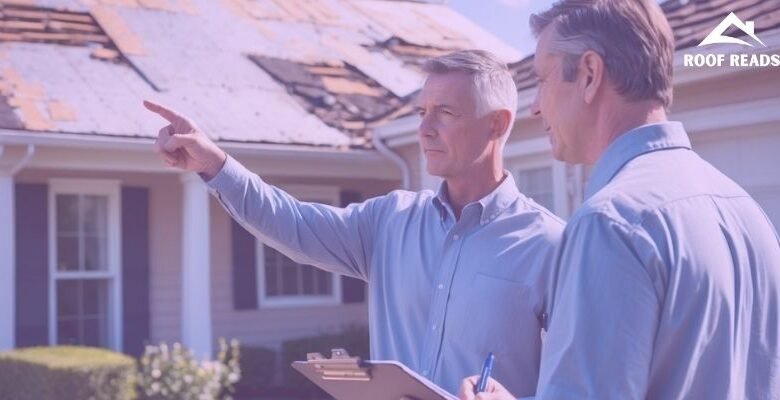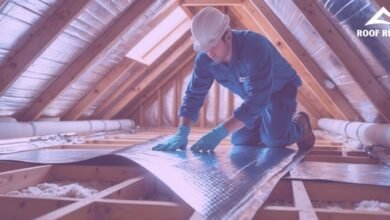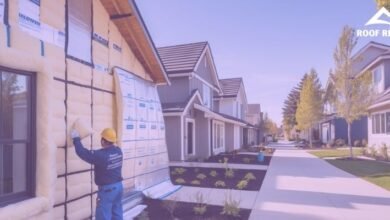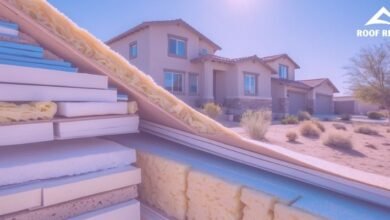Will Insurance Cover a 20-Year-Old Roof? Understanding Policy Limitations and Options

Wondering if your aging roof is still protected by your insurance policy? It’s a common concern for homeowners with older roofs. The 20-year mark is often a critical turning point when it comes to insurance coverage. Most standard homeowners insurance policies will cover a 20-year-old roof if the damage was caused by a covered peril like storms or falling trees, but coverage may be limited based on the roof’s condition and maintenance history.
Many insurance companies take roof age into consideration when determining coverage. Some insurers may only pay for the actual cash value of an older roof rather than the full replacement cost. This means they’ll factor in depreciation, potentially leaving you with a larger out-of-pocket expense. Additionally, if your roof shows signs of neglect or poor maintenance, your claim might be denied regardless of its age.
Before a major weather event hits, it’s wise to understand exactly what your policy covers. Insurance companies typically conduct inspections before issuing or renewing policies for homes with older roofs. If your roof is approaching or has passed the 20-year mark, review your policy details or contact your insurance agent to clarify your coverage limitations.
Key Takeaways
- Insurance typically covers 20-year-old roofs for sudden damage from covered perils, but not for normal wear and tear.
- Older roofs may only be covered for their depreciated value rather than full replacement cost.
- Regular maintenance and documentation of your roof’s condition can significantly improve your chances of successful claims.
How Insurance Covers a 20-Year-Old Roof

Insurance coverage for a 20-year-old roof depends on your policy terms, the condition of your roof, and how the damage occurred. Most standard homeowners insurance policies have specific provisions for aging roofs that can affect whether repairs or replacement will be covered.
Understanding Homeowners Insurance Policies
Homeowners insurance typically covers roof damage caused by “perils” like fire, wind, hail, and falling objects. For a 20-year-old roof, coverage depends on the specific language in your policy. Many insurance companies have age restrictions or special provisions for older roofs.
Most policies will cover a 20-year-old roof if the policy was in force when the damage occurred. However, getting new insurance with an older roof can be challenging. Some insurers may:
- Require a roof inspection before providing coverage
- Exclude roof coverage entirely until replacement
- Charge higher premiums to account for increased risk
- Only cover the roof up to its depreciated value
It’s crucial to read the fine print of your home insurance policy to understand what’s covered and what’s excluded regarding your aging roof.
Factors That Affect Roof Coverage
Several factors influence whether insurance will cover a 20-year-old roof:
Roof condition: Well-maintained roofs are more likely to be covered, even if older.
Damage cause: Coverage typically depends on how damage occurred:
- Covered: Sudden, accidental damage from storms, fire, or falling trees
- Not covered: Normal wear and tear, neglect, or lack of maintenance
Geographic location: Areas with frequent severe weather may have stricter roof requirements.
Roof material: Some materials like metal or slate have longer lifespans and may be more insurable when older.
Insurance companies often send adjusters to assess roof damage and determine if age or poor maintenance contributed to the problem. Documentation of regular roof inspections and maintenance can strengthen your claim.
Actual Cash Value vs. Replacement Cost
Insurance policies typically cover roofs in one of two ways:
Actual Cash Value (ACV): With a 20-year-old roof, this coverage pays only the depreciated value of your roof. The calculation considers:
- Original roof cost
- Expected lifespan (typically 20-30 years)
- Current age
For example, if your roof cost $10,000 new and has a 25-year lifespan, at 20 years old it might only be valued at $2,000.
Replacement Cost Value (RCV): This superior coverage pays the full cost to replace your roof with similar materials, regardless of age.
Many insurance companies automatically switch coverage from RCV to ACV when a roof reaches 15-20 years old. Homeowners should review their policy details carefully to understand which type of coverage applies to their aging roof.
Common Causes of Roof Damage and Covered Perils

Your homeowners insurance will generally cover roof damage caused by sudden, unexpected events. Understanding what perils are covered can help you determine if your aging roof will be protected.
Storm Damage: Hail, Wind, and Falling Objects
Storm damage represents one of the most common causes of roof problems that insurance typically covers. Hail can create dents or punctures in roofing materials, especially on asphalt shingles where impact marks may be visible. Insurance companies usually cover hail damage regardless of roof age.
High winds can lift, crack, or completely tear off shingles. Even moderately strong winds can damage an older roof where shingles may have lost some adhesion over time.
Falling objects like tree limbs or branches are generally covered perils. When a tree crashes onto your roof during a storm, insurance typically covers both the roof repair and tree removal.
Documentation is crucial for these claims. Take photos of any visible damage and document when the storm occurred before contacting your insurance company.
Fire and Vandalism
Fire damage to your roof is almost always covered by standard homeowners insurance policies. This includes damage from both direct flames and smoke. Insurance typically covers full restoration to pre-damage condition.
Vandalism coverage extends to deliberate damage caused by others. This might include:
- Broken skylights
- Damaged vents
- Graffiti on roofing materials
- Intentional structural damage
Most insurance companies require a police report when filing vandalism claims. Even with a 20-year-old roof, these non-weather-related incidents are generally covered as they aren’t related to the age or condition of your roof.
Understanding Exclusions: Wear and Tear, Neglect, and Aging
Insurance policies specifically exclude normal wear and tear from coverage. Gradual deterioration from age and exposure to elements isn’t considered a sudden or accidental event.
Neglect is another common exclusion. If you’ve failed to perform reasonable maintenance—like cleaning gutters or replacing obviously damaged shingles—insurers may deny claims related to resulting damage.
An aging roof presents particular challenges. Most insurers consider the typical lifespan of roofing materials when assessing claims. Asphalt shingles typically last 15-30 years, so a 20-year-old roof may be near the end of its expected life.
Some companies conduct roof inspections before renewing policies on older homes or may require roof certification. Others might offer actual cash value coverage instead of replacement cost for roofs over a certain age.
Eligibility and Limitations for Older Roofs
Insurance coverage for a 20-year-old roof depends on multiple factors including your roof’s condition, insurance policy terms, and your provider’s specific requirements. Most insurers apply certain restrictions for older roofs that homeowners should understand before filing claims.
Roof Condition and Inspection Requirements
Insurance companies typically require roof inspections for homes with roofs older than 20 years. These inspections evaluate overall roof condition including:
- Shingle integrity and wear patterns
- Signs of leaks or water damage
- Structural soundness
- Proper installation and ventilation
A professional inspection can cost between $150-$400 but may save thousands in coverage disputes. Some insurers require this inspection before issuing or renewing a policy for homes with older roofs.
Maintaining detailed maintenance records can significantly strengthen your position. Regular maintenance showing responsible upkeep may convince insurers to provide more favorable coverage terms despite your roof’s age.
Most insurance companies expect homeowners to perform reasonable maintenance to prevent avoidable damage. Failure to maintain your roof properly could result in claim denials.
Depreciation and Insurance Settlements
With older roofs, insurers typically use Actual Cash Value (ACV) rather than Replacement Cost Value (RCV) for settlements. This difference is crucial to understand:
- Actual Cash Value – Covers the depreciated value of your roof (original cost minus depreciation)
- Replacement Cost – Covers the full cost to replace the roof with similar materials
For a 20-year-old roof, depreciation can be substantial. Asphalt shingles with a 25-year lifespan might be depreciated by 80%, meaning you’d receive only 20% of replacement costs.
The claims process for older roofs often involves higher deductibles and more scrutiny. Some policies include specific “roof schedules” that reduce coverage percentages based on roof age.
Insurance companies may offer partial coverage for roof repairs but limit or deny coverage for full roof replacement.
Coverage for Older Roofs by Insurance Providers
Different insurance providers have varying policies regarding older roofs:
| Insurance Company Type | Typical Stance on 20-Year-Old Roofs |
|---|---|
| Standard providers | May offer limited coverage with higher premiums |
| High-risk specialists | More willing to cover older roofs but at premium costs |
| Budget insurers | May decline coverage or require roof replacement |
Some insurance companies offer specific endorsements or riders for older roofs. These additional coverages cost more but provide better protection for roof repairs or replacement.
When filing an insurance claim, document all damage thoroughly with photos and written descriptions. Getting multiple repair estimates strengthens your position.
For homes with historical value, specialized policies may provide better coverage for older roofs that maintain historical integrity. These policies typically cost more but offer better protection.
Maximizing Your Insurance Claim for a 20-Year-Old Roof
Getting the most from your insurance claim for an older roof requires careful planning and documentation. Insurance companies often hesitate to cover aging roofs fully, but there are strategies to improve your chances of approval.
Filing an Insurance Claim and Documentation
When filing a claim for your 20-year-old roof, documentation is critical. Take clear photos of all damage immediately after the incident occurs. These visual records will serve as evidence when the insurance adjuster evaluates your claim.
Keep a maintenance log showing all repairs and professional inspections over the years. This helps prove you’ve been a responsible homeowner.
Save receipts from previous roof work and repairs. This establishes the roof’s value and condition before the damage occurred.
Document the date and details of the incident that damaged your roof. Was it a storm, fallen tree, or other covered peril? Be specific about what happened and when.
Request a professional roof inspection from a licensed contractor. Their written assessment can support your claim with expert opinion about the cause and extent of damage.
Preventive Maintenance, Repairs, and Temporary Solutions
Regular maintenance can both extend your roof’s life and strengthen your insurance claim. Clean gutters and remove debris quarterly to prevent water backup and damage.
Trim overhanging branches that could fall during storms. This shows you’ve taken steps to protect your property from preventable damage.
Address small issues promptly before they become major problems. Replace missing shingles and repair minor leaks as they appear.
After damage occurs, make temporary repairs to prevent further problems. Cover holes with tarps or plastic sheeting to minimize water intrusion.
Keep your attic well-ventilated and insulated. This prevents ice dams in winter and extends shingle life in summer by reducing temperature extremes.
Consider upgrading to impact-resistant or energy-efficient roofing materials when repairs are needed. Some insurance companies offer discounts for these improvements.
Working With Insurance Agents and Roofing Contractors
Select a roofing contractor with insurance claim experience. They can help identify all damage and communicate effectively with your insurance company.
Ask your contractor to be present during the insurance adjuster’s inspection. They can point out damage the adjuster might miss and explain technical issues.
Review your policy details with your insurance agent before filing. Understand your deductible, coverage limits, and whether you have replacement cost or actual cash value coverage.
Get multiple repair estimates from licensed contractors. This gives you leverage if the insurance company’s damage assessment seems low.
If your claim is denied, request a detailed explanation in writing. You have the right to appeal the decision with additional documentation or a second opinion.
Consider hiring a public adjuster for complex claims. They work for you, not the insurance company, and can help negotiate a fair settlement for a percentage of the claim.
Frequently Asked Questions
Insurance coverage for older roofs can be complex and varies based on policy terms, location, and roof condition. Many homeowners have specific questions about what’s covered, what factors influence coverage decisions, and how to maintain insurance protection as their roof ages.
What are the age limits for roof coverage in homeowners insurance policies?
Most standard insurance policies fully cover roofs that are under 10 years old. For roofs between 10-15 years, coverage often remains intact but may include some depreciation.
Roofs that are 15-20 years old typically face increased scrutiny during policy renewals. Many insurers require roof inspections at this age range before continuing full coverage.
For roofs over 20 years old, coverage becomes more restricted. Some companies may only offer actual cash value coverage rather than replacement cost, while others might refuse coverage entirely.
How does roof age affect insurance coverage in different states, such as Florida or Texas?
Florida has particularly strict requirements due to frequent hurricane damage. Many Florida insurers won’t provide new policies for roofs older than 15 years without an inspection certificate.
Texas insurers often implement age-based roof coverage tiers because of hail and storm risks. Homes with roofs over 15 years old typically face higher premiums in high-risk areas.
Both states allow insurers to offer Actual Cash Value policies for older roofs, which means payouts reflect depreciation. Some Florida insurers have recently implemented special roof deductibles separate from the main policy deductible.
What factors determine if an insurance company will pay for roof replacement?
The cause of damage is the primary factor. Sudden, accidental damage from covered perils like wind, hail, or falling trees is typically covered regardless of roof age.
The roof’s maintenance history plays a significant role. Evidence of regular maintenance and prompt repairs of minor issues strengthens claims even for older roofs.
The policy type matters considerably. Replacement Cost Value policies provide better coverage than Actual Cash Value policies, which deduct for depreciation.
How is the actual cash value of an aged roof calculated by insurance companies?
Insurance companies start with the current replacement cost of a new roof with similar materials. This includes both labor and materials at today’s prices.
They then calculate depreciation based on the roof’s expected lifespan and current age. A 20-year-old asphalt shingle roof with a 25-year expected lifespan might be depreciated by 80%.
The final calculation subtracts the depreciation amount from the replacement cost. For example, a $10,000 replacement roof with 80% depreciation would result in a $2,000 actual cash value payout.
Are there specific considerations for filing a claim for a roof older than 15 years?
Document all maintenance and repairs performed throughout the roof’s lifetime. This helps counter potential claims of negligence or normal wear and tear.
Hire a professional roofing inspector before filing a claim. Their report can establish the difference between pre-existing conditions and new storm damage.
Be prepared for a more thorough inspection process. Insurance adjusters scrutinize older roofs more carefully and may look for reasons to deny claims based on pre-existing wear.
What maintenance records are needed to support insurance claims for older roofs?
Keep receipts from all professional roof inspections, ideally performed annually or after major storms. These establish your commitment to roof maintenance.
Maintain documentation of all repairs, including contractor invoices detailing the work performed and materials used. Photos before and after repairs are particularly valuable.
Retain records of any roof certifications or warranty information. These documents help establish the expected remaining lifespan of your roof and its overall condition.




